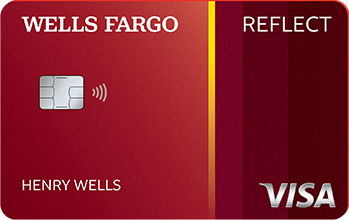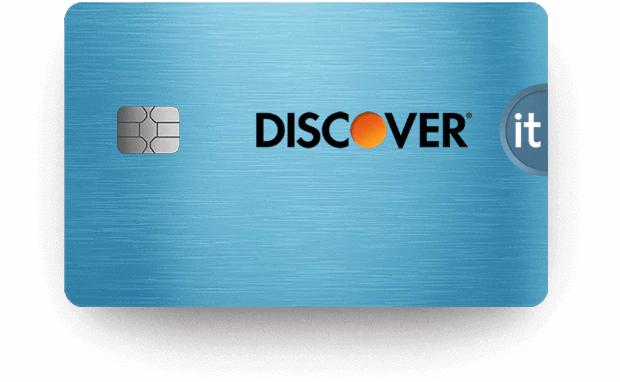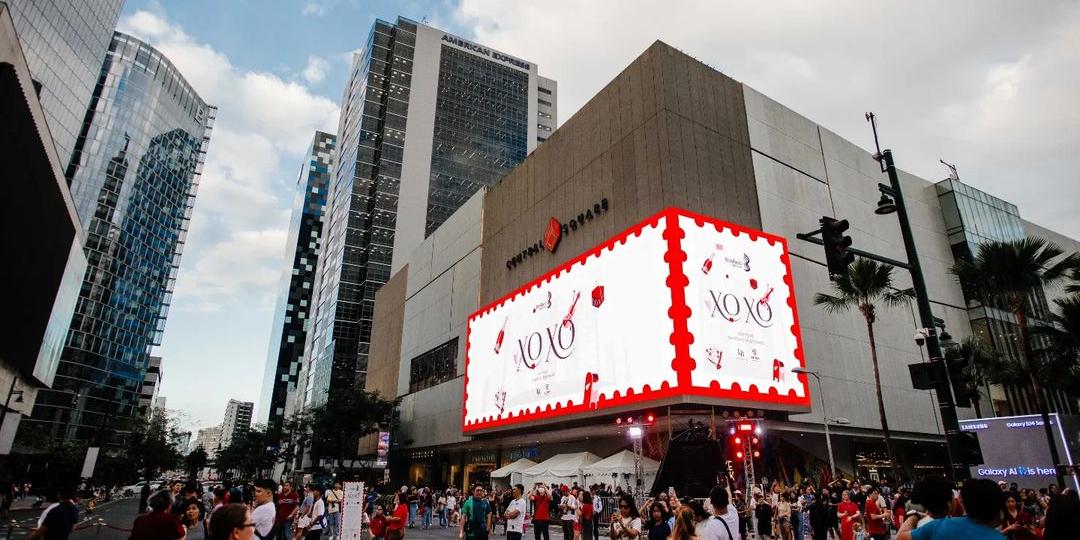
BEST CREDIT CARDS FOR HOME IMPROVEMENT PROJECTS OF JUNE 2024
5 Best Credit Cards for Home Improvement Projects of 2024
Best for Long Introductory APR Offer: Wells Fargo Reflect® Card
Why we chose it: The Wells Fargo Reflect Card’s 21-month 0% introductory APR offer on purchases and balance transfers (18.24%, 24.74% or 29.99% variable APR thereafter) is one of the longest available, making this card the top choice for anyone looking to finance expensive home improvement purchases interest-free for as long as possible.
Pros
- Intro APR offer is one of the longest on the market
- No annual fee
- Offers cellphone protection against damage or theft (subject to $25 deductible)
Cons
- No rewards
- No welcome bonus
- Few benefits aside from intro APR offer
Best for Overall Rewards: Bank of America® Customized Cash Rewards Credit Card
$200 online cash rewards bonus after you make at least $1,000 in purchases in the first 90 days of account opening
Why we chose it: The no-annual-fee Bank of America Customized Cash Rewards Credit Card offers 3% cash back on home improvement and furnishings if you choose it as your 3% category, and the list of qualifying merchants is quite broad. Plus, you also earn 2% cash back at grocery stores and wholesale clubs (on up to $2,500 in spending each quarter on 3% and 2% category purchases, then 1% cash back). Once you’ve completed your home improvements, you can change your 3% category to one of five other options.
Pros
- 3% cash back on home improvement and furnishings (if chosen as category, on up to $2,500 in quarterly spending across 3% and 2% categories, then 1% back)
- “Home improvements and furnishings” category is very broad
- Introductory APR offer available
Cons
- 3% and 2% cash back has a combined $2,500 quarterly spending cap (then 1% back)
- Limited rewards redemption options
- Intro APR offer is shorter than some other cards
Best for Flexibility: Wells Fargo Active Cash® Card
After spending $500 in purchases in the first 3 months
Why we chose it: The no-annual-fee Wells Fargo Active Cash Card’s 2% cash rewards rate on purchases means you can get a good rewards rate without worrying about whether your home improvement expenses fall under a credit card rewards program’s definition of “home improvements.”
Pros
- 2% cash rewards on purchases, no matter what
- Introductory APR offer available
- No annual fee
Cons
- No bonus rewards on home improvement purchases specifically
- Intro APR offer shorter than some other cards
- Limited rewards redemption options
Best for Smaller Purchases: Citi Custom Cash® Card
After spending $1,500 on purchases in the first 6 months of account opening
Why we chose it: The Citi Custom Cash® Card offers a whopping 5% cash back on your top spending category among 10 options, one of which is home improvement stores. However, the low monthly spending cap (up to $500 in spending per billing cycle, then 1%) makes this card best for smaller projects or situations where you can spread out the cost over several months.
Pros
- 5% cash back on home improvement stores (on up to $500 in spending per billing cycle, then 1%)
- Nine other 5% categories available
- Introductory APR offer available
Cons
- “Home improvement stores” category is relatively narrow
- Low monthly spending cap
- No additional bonus categories; 1% back on everything else
Best Retail Credit Card: MyLowe’s Rewards Credit Card
Why we chose it: Although retail credit cards are less versatile than general rewards credit cards, the no-annual-fee MyLowe’s Rewards Credit Card can be a good option for stocking up on home improvement supplies from Lowe’s thanks to its 5% discount on eligible Lowe’s purchases.
Pros
- 5% discount on eligible purchases from Lowe’s
- Special financing offers available
- 20% instant discount (up to $100) for new cardmembers
Cons
- No traditional rewards apart from 5% discount
- No rewards or benefits for non-Lowe’s purchases
- 5% off and special financing offers mutually exclusive
A Closer Look at the Best Credit Cards for Home Improvement Projects
Best for Long Introductory APR Offer: Wells Fargo Reflect Card
Why we love this card: The Wells Fargo Reflect Card’s long introductory APR on purchases and balance transfers can give cardholders ample time to pay off a large home improvement expense without interest. Although it doesn’t come with any ongoing rewards, it’s a good choice for those looking for the longest possible period of interest-free financing.
Who should have this in their wallet: This card is best for those looking to finance a large home improvement purchase without interest and can pay off the full balance in 21 months or less (18.24%, 24.74% or 29.99% variable APR after).
Other cards to consider: The U.S. Bank Visa® Platinum Card also offers a 0% introductory APR for 21 billing cycles (18.74%- 29.74% variable APR thereafter) without rewards. Alternatively, the Wells Fargo Active Cash, with its 15-month 0% intro APR period (20.24%, 25.24% or 29.99% variable APR after) and 2% cash rewards on purchases, is a better choice for consumers willing to accept a shorter intro APR period in exchange for better rewards.
Best for Overall Rewards: Bank of America Customized Cash Rewards Credit Card
Why we love this card: The Bank of America Customized Cash Rewards Credit Card offers solid rewards on home improvement purchases but remains useful for other expenses. The reason? It features a unique rewards structure that lets you choose your 3% category—with home improvements and furnishings being one of six options—every month. It also offers 2% cash back on groceries and wholesale clubs ($2,500 quarterly spending cap on 3% and 2% category purchases, then 1% back) and a 0% intro APR on purchases and balance transfers for 15 billing cycles (19.24% to 29.24% variable APR thereafter). The quarterly cap bonus rewards could be limiting for some spenders, though.
Who should have this in their wallet: This card is best for consumers looking for a tiered cash back card that offers bonus rewards on home improvement purchases and can still be useful for other spending in the future.
Other cards to consider: If your home improvement expenses are small, the Citi Custom Cash Card might be more rewarding thanks to its higher rewards rate (though it does have a lower monthly spending cap). If your home improvement expenses don’t fall into one of the merchant categories that Bank of America considers “home improvement and furnishings,” you’ll likely be better off with a flat-rate cash back card like the Wells Fargo Active Cash Card.
Best for Flexibility: Wells Fargo Active Cash Card
Why we love this card: If you don’t think your renovation expenses will fall under the sometimes-narrow criteria of what other credit card rewards programs consider to be “home improvement” purchases, the Wells Fargo Active Cash’s 2% cash rewards rate will earn you a decent return on your spending without worrying about bonus categories. The 15-month 0% intro APR period on purchases and balance transfers (20.24%, 25.24% or 29.99% variable APR thereafter) can offer some breathing room to pay off a large purchase. And once you’re done with home improvements, this card is worth keeping around as a general cash back card.
Who should have this in their wallet: This card is great for anyone making home improvement purchases that might not qualify for bonus category rewards under other rewards programs.
Other cards to consider: The Bank of America Customized Cash Rewards Credit Card offers a higher rewards rate on home improvement purchases, so long as the merchant falls into one of the categories on this list. If you value an intro APR offer more than rewards, the Wells Fargo Reflect Card has a longer introductory APR period.
Best for Smaller Purchases: Citi Custom Cash Card
Why we love this card: Like the Bank of America Customized Cash Rewards Credit Card, the Citi Custom Cash Card offers an elevated rewards rate on one eligible spending category from several options, including home improvement stores. The 5% cash back rate is automatically applied to your top spending category each billing cycle, so there’s nothing to track or activate. Although the Custom Cash’s rewards rate is one of the highest around, you’ll only earn 5% back on your first $500 spent each billing cycle, after which you’ll earn 1% back. The card has no bonus rewards other than the 5% category, but it does have a 15-month 0% intro APR offer on purchases and balance transfers (19.24% to 29.24% variable APR thereafter).
Who should have this in their wallet: This card is best for consumers looking to earn the highest rewards rate on smaller purchases and whose home improvement expenses mainly come from home improvement stores.
Other cards to consider: For larger home improvement expenses or expenses that aren’t from home improvement stores, consider the Bank of America Customized Cash Rewards Credit Card, which has a higher spending cap and a broader rewards category. If you’re really spending a lot, the Wells Fargo Active Cash Card’s 2% cash rewards rate on purchases might work out to be more rewarding than either the Citi Custom Cash or Bank of America Customized Cash.
Best Retail Credit Card: MyLowe’s Rewards Credit Card
Why we love this card: The MyLowe’s Rewards Credit Card’s 5% discount on all eligible Lowe’s purchases—essentially the same as 5% cash back—can save you quite a bit if your home improvement expenses mainly come from that store. The instant 20% off (up to $100) for new card members is a nice bonus if you have a big purchase planned. Depending on the circumstances, the card’s special financing offers may work better for you than a traditional 0% APR offer from a regular credit card, though you should read the fine print and run the numbers for yourself.
Who should have this in their wallet? This card will benefit Frequent Lowe’s shoppers looking for maximum rewards on their purchases or a special financing offer.
Other cards to consider: For a card that offers rewards on purchases from all home improvement stores, try the Bank of America Customized Cash Rewards Credit Card or the Citi Custom Cash. If you want 0% financing, a 0% introductory APR credit card like the Wells Fargo Reflect Card can offer a longer interest-free period than the special financing offers from the MyLowe’s card.
What Is a Home Improvement Credit Card?
Technically, there’s no such thing as a “home improvement credit card,” just like there’s no such thing as a “gas credit card” or “grocery credit card.” You can use any credit card to pay for home improvements if the vendor accepts that payment method.
However, some credit cards are better suited than others for this type of spending. The best credit cards for home improvements typically fall into one of two types, depending on your goals:
- Credit cards that earn elevated rewards on home improvement-related purchases
- Credit cards that offer an introductory APR or other kind of special financing, which can let you pay for a large purchase—such as an expensive home improvement project—over time with lower or no interest (as long as you pay off the full balance by the end of the intro APR or special financing period).
Some home improvement retailers, such as The Home Depot or Lowe’s, have their own retail credit cards that typically come with rewards and special financing offers specific to that store. Retail cards can be a good choice for loyalists of a particular store, but generic rewards cards tend to be more versatile.
Pros and Cons of Using a Credit Card for Home Improvement Projects
Using a credit card for home improvements can let you earn rewards on the purchase or access short-term interest-free financing through introductory APR offers, but they come with some drawbacks. Here are some pros and cons of using a credit card to pay for your next renovation:
Pros
- Can earn rewards on purchases
- An introductory APR offer can let you finance large projects with little to no interest
- Quick, easy and secure way to make transactions
Cons
- Credit card interest rates are extremely high outside of introductory APR offers
- Some vendors/contractors may not accept credit cards or charge a fee to do so
- Credit cards can make it easier to overspend
What To Look For in a Credit Card for Home Improvement Projects
Rewards
If you’re hoping to earn credit card rewards on your home improvement expenses, it’s important to look at the fine print. Several cards offer bonus rewards on home improvement-related purchases, but different cards may define that category differently. Some cards only offer extra points on purchases made at home improvement stores (like The Home Depot or Lowe’s), while others may count a larger variety of businesses (including private contractors) under the umbrella of “home improvement.” Before getting a card, consider where your primary home improvement expenses will come from and check the fine print of your intended card to ensure you’ll earn bonus rewards on your purchase.
Suppose your home improvement expenses come from a niche source that doesn’t qualify for the “home improvement” category of typical tiered rewards cards. In that case, you might be better off with a flat-rate rewards card, like a 2% cash back credit card.
Introductory APR Offer
If you’re hoping to use a credit card to finance your home improvement expenses, you’ll want a card with a 0% introductory purchase APR offer. These offers give you a promotional 0% APR on new purchases for a limited time, typically 12 to 21 months. As long as you abide by the offer terms and pay off the full balance within the introductory APR period, you won’t pay interest. However, if you’re still carrying a balance at the end of the introductory period, the remaining balance will start accruing interest at the regular APR, which can be quite high.
Because of this, it’s important to have a plan to pay off your balance within the introductory period. Divide your purchase amount by the length of the introductory period to determine how much you need to pay each month to avoid interest. Double-check the offer’s fine print to understand what types of transactions the introductory APR applies to (purchases, balance transfers or both) and under what circumstances the offer may be revoked.
When choosing a low-interest credit card, you can either select a card with the longest introductory period available (if you need all that time to pay off your balance) or one with a slightly shorter introductory APR period that offers rewards or other benefits.
If you need more time to pay off the balance, consider a fixed-rate personal loan instead. These typically have significantly lower interest rates than credit cards and fixed monthly payments.
Special Financing
Special financing offers are often found on retail credit cards and work differently from introductory APR offers. Terms of special financing offers can vary widely by card, so make sure you read the fine print.
Pay special attention to what happens if you don’t pay off the full purchase amount by the end of the special financing period. While most 0% APR credit cards start charging you interest from the date the introductory period ends, some special financing offers will retroactively charge you interest starting from the purchase date.
Retail Card vs. Regular Credit Card
Large home improvement stores, like Lowe’s or The Home Depot, might offer their own store-branded credit cards. These cards typically have rewards and/or special financing offers specific to the store.
A regular credit card with an introductory APR offer or rewards that aren’t restricted to a single retailer will generally be more useful. However, store cards can be easier to qualify for. In addition, sometimes store cards will offer coupons for new customers that can be useful if you’re making a large purchase from that store.
Frequently Asked Questions
What Is the Easiest Home Improvement Credit Card To Get?
Generally, the easiest home improvement credit card to get will be a retail credit card from a home improvement store like The Home Depot or Lowe’s.
Should I Get a 0% APR Credit Card or Personal Loan for Home Improvements?
If you can pay off your full balance within 12 to 21 months (the typical introductory period for a 0% APR credit card), a 0% APR credit card can help you save on interest. If you think you’ll need a longer payoff period, consider a personal loan with a fixed interest rate and fixed monthly payments.
Should I Use a Credit Card for Home Improvements?
You should only use a credit card for home improvements if you’re confident you can pay off the balance in full by either the payment due date (if the card doesn’t have a 0% APR offer) or the end of the introductory APR period (if the card does have a 0% APR offer). Otherwise, high credit card interest rates can wipe out any rewards or benefits offered.
The post Best Credit Cards for Home Improvement Projects of June 2024 first appeared on Newsweek Vault.
2024-06-28T17:42:57Z dg43tfdfdgfd











